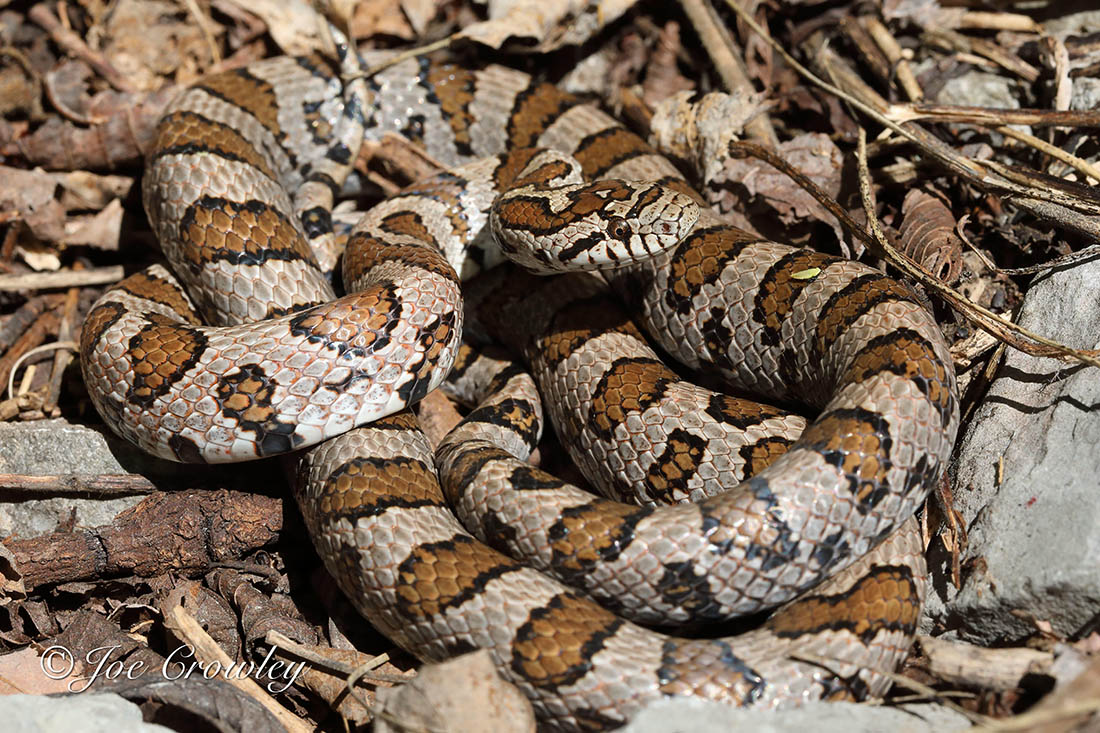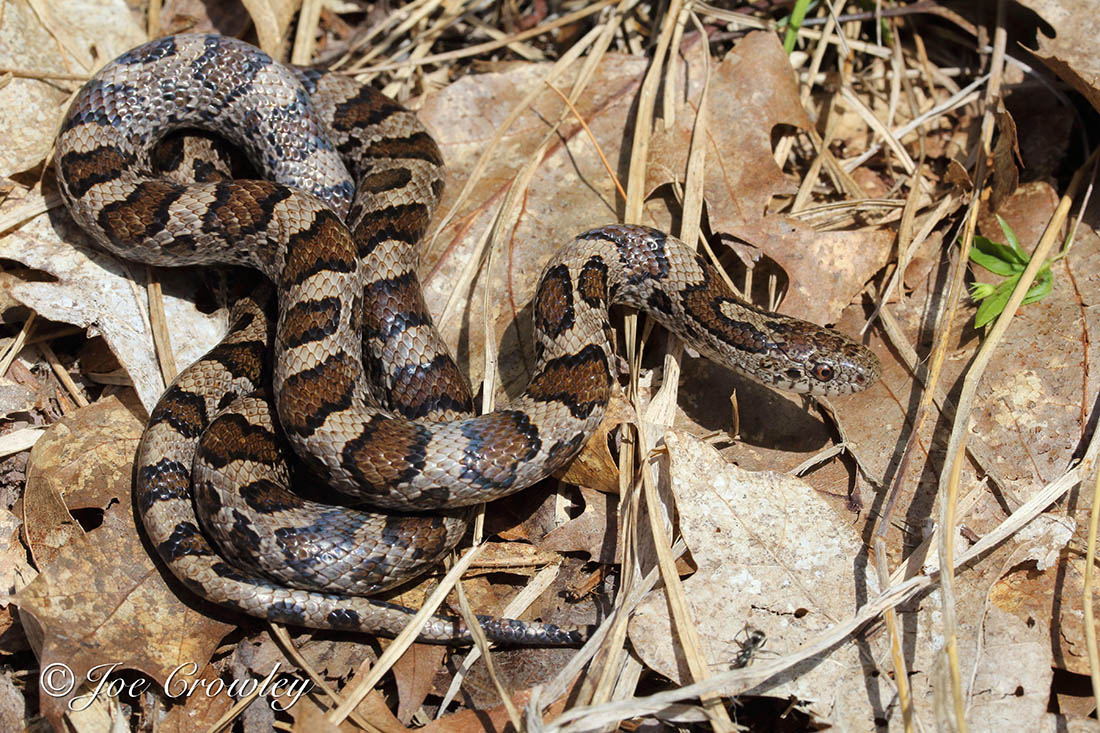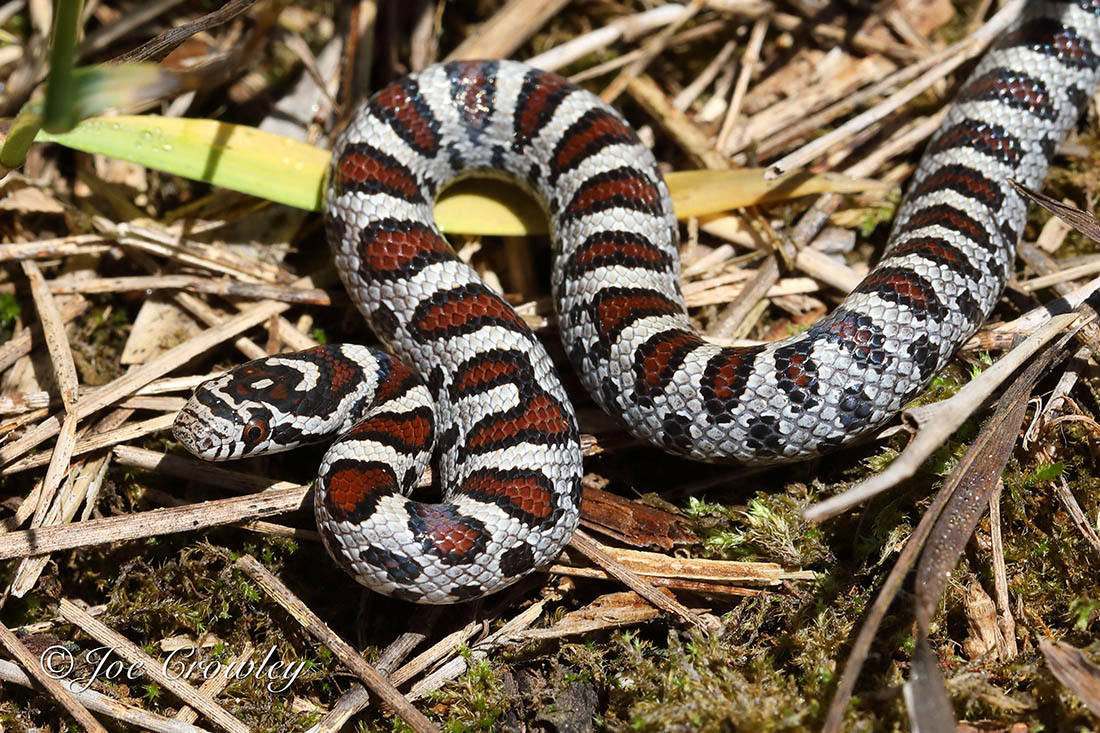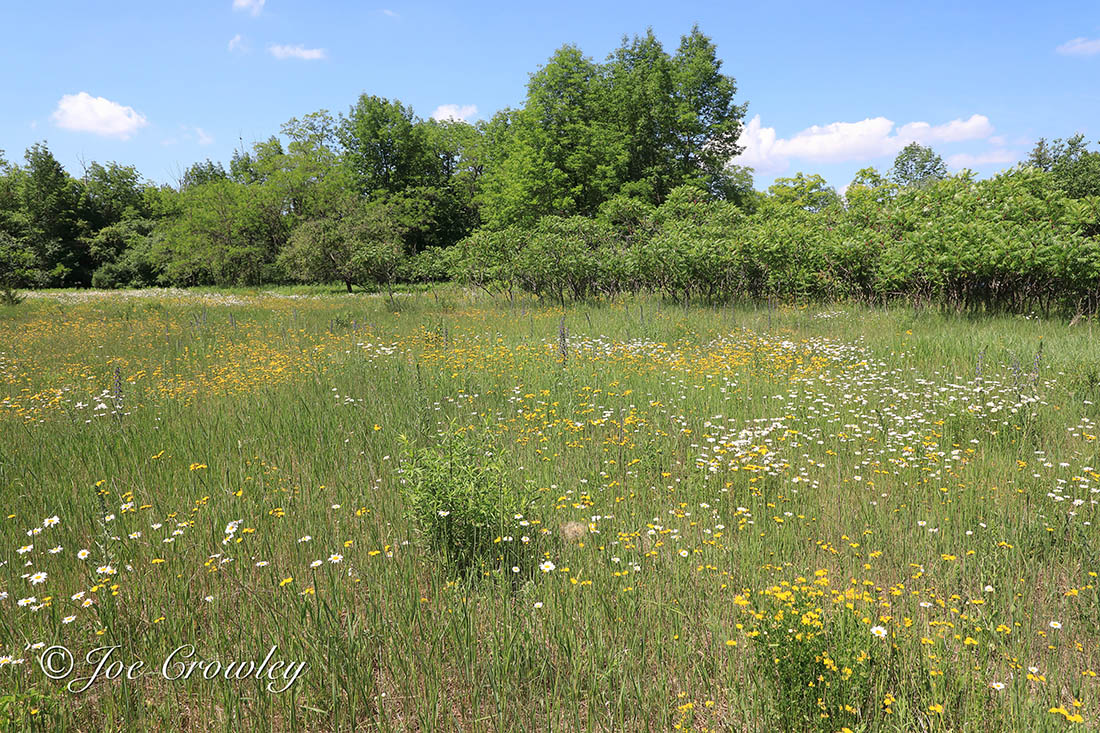The Eastern milksnake (Lampropeltis triangulum) is a colourful, non-venomous snake native to eastern North America. In Canada, the Eastern milksnake is found in southern Ontario and southwestern Quebec. Although this species has disappeared from some intensively farmed and urbanized areas, it remains relatively common and widespread throughout much of its Canadian range. It is classified as a species at risk under Canada’s Species at Risk Act.

Description
Eastern milksnakes can grow to over 130 cm in total length, but most individuals are less than a metre in length. Adults are tan or light brown with dark red or reddish-brown blotches that are outlined in black. Young individuals are light grey with bright red or reddish orange blotches, also outlined in black. One row of large blotches extends down the back and alternating rows of smaller blotches run along each side. Eastern milksnakes typically have a light-coloured V- or Y-shaped blotch on the back of the neck. A dark stripe extends across the top of the head just in front of the eyes. Another stripe is often present on each side of the head from the eye to the back of the jaw. The belly is tan, grey or whitish with irregular black chequered patterning. Eastern milksnakes have round pupils, a narrow head and a slender body. They have smooth scales, which give individuals a glossy appearance.
Did you know?
When threatened, Eastern milksnakes may rapidly vibrate their tail, which can produce a loud buzzing sound if it comes in contact with dry vegetation. This behaviour, combined with their blotchy colouration, often results in Eastern milksnakes being misidentified as rattlesnakes.

Distribution and Habitat
In Canada, the Eastern milksnake ranges from just north of Lake Huron south and east throughout most of central and southern Ontario and into southwestern Quebec. This species is widespread throughout the eastern United States, from Maine south to North Carolina and west to Minnesota and northeastern Louisiana.
Did you know?
Until recently, the milksnake was considered a single species found throughout most of the United States, Mexico, central America and as far south as Ecuador in South America. In 2014, genetic analysis led to the milksnake being split into several different species, including the Eastern milksnake.
In Canada’s cool climate, Eastern milksnakes primarily live in open-canopy habitats that are sunny and warm, such as forest clearings, old fields, meadows or rocky outcroppings. They can also be found in forests and woodlands, but spend less time in these cooler habitats. Eastern milksnakes are secretive and rely on rocks, logs, boards and other cover objects to provide shelter. By hiding under cover in sunny areas, individuals can warm up while remaining protected from predators. Females lay their eggs in a variety of features, including in rotting logs and stumps, leaf piles, mammal burrows, compost or mulch piles, loose soil and under rocks, logs or other debris. During the winter, Eastern milksnakes hibernate underground in rock crevices, mammal burrows, building foundations or other features that allow them to get below the frost line.

Reproduction and Development
In Canada, Eastern milksnakes are active from late April or early May until they enter hibernation in late September or early October. Mating occurs in the spring shortly after emerging from hibernation. Females lay a single clutch of 8–16 eggs in June or July. However, it is unknown if females reproduce every year in Canada. The eggs hatch in August or September after an incubation period of roughly two months. Eastern milksnakes in Canada reach sexual maturity at three or four years of age. Individuals are capable of living for more than 20 years in captivity, but the typical lifespan of wild individuals is much lower.

Diet and Predation
Eastern milksnakes are generally considered nocturnal, although their behaviour is poorly understood. In Canada, low overnight temperatures likely limit nocturnal activity and individuals may be more active during the day than elsewhere in their range. Adults primarily eat small mammals but will also eat birds, snakes, lizards and a variety of other small animals. Young Eastern milksnakes predominantly eat the young of other snakes. Eastern milksnakes search for prey by sight and smell. Their slender bodies allow them to squeeze through tight spaces in search of rodent nests or other small prey. Eastern milksnakes are constrictors, meaning they kill their prey by coiling around the animal and squeezing until it suffocates. After being constricted, prey is swallowed whole. However, eggs, baby mice and other small prey are not constricted before being swallowed.
Predators of the Eastern milksnake include a variety of mammals (e.g., raccoon, coyote, fox, skunk, opossum), hawks, owls, other birds, bullfrogs and other Eastern milksnakes. Feral and domestic cats may also be a significant source of predation in rural or urban areas.
Did you know?
The name “milksnake” originated from the misconception that this species would sneak into barns and steal milk from cows. Although this is not true, Eastern milksnakes are often abundant around barns and other human-settled-areas. This is because these areas support large populations of mice and other rodents — the Eastern milksnake’s primary prey. By helping control rodent populations, Eastern milksnakes provide a beneficial service to humans.
Threats
Being killed on roads is a serious threat to Eastern milksnakes. Research on long-lived snake species in Canada has shown that the death of even a small number of adults on roads each year can cause population declines. Eastern milksnakes are able to survive in some human-modified landscapes with low to moderate levels of disturbance, such as rural agricultural areas. However, intensive agriculture (e.g., cash crops) and urban development has led to the disappearance of this species from some parts of its range. Unfortunately, some people kill Eastern milksnakes after mistaking them for rattlesnakes or other venomous species. The increased abundance of natural predators (e.g., raccoons) in many human-settled areas, as well as feral and domestic cats, poses an additional threat to Eastern milksnakes.

Status and Conservation
Globally, the Eastern milksnake is listed as a species of least concern by the International Union for Conservation of Nature. However, because Eastern milksnakes face a variety of threats and have declined throughout parts of their Canadian range, they have been listed as a species of Special Concern under the Canadian Species at Risk Act. Continued efforts to address widespread threats to Canada’s snakes, such as road mortality and persecution by humans, are necessary to help maintain healthy Eastern milksnake populations in Canada.

 Share on Facebook
Share on Facebook Share on X
Share on X Share by Email
Share by Email Share on Google Classroom
Share on Google Classroom







